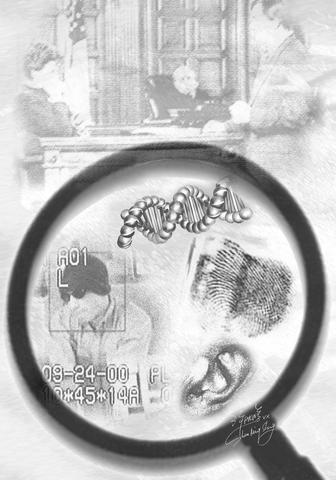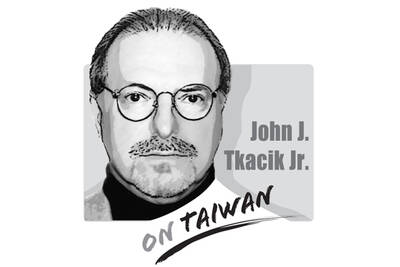When Darren Surutan stood trial in 2002 for the manslaughter of his partner, Sarah Lee, no fewer than 10 medical experts gave evidence on two simple issues: How many bruises were on the victim's face, and had Lee, an alcoholic, acquired them in a fall or been assaulted by the accused? The experts gave profoundly conflicting medical evidence. Last May, an appeals court in London quashed Surutan's conviction on the grounds that the jury, with inadequate guidance from the judge, would have been thoroughly confused by the deep disagreements between the experts.
Two months later, a British teacher Sion Jenkins' 1998 conviction for murdering his foster daughter was quashed when the appeals court ruled that new forensic evidence made his conviction incorrect. Jenkins is on conditional bail with a retrial date provisionally set for April.

Other high-profile UK cases, including those of Angela Cannings and Sally Clark, freed after their convictions for murdering their babies were overturned, have put a question mark over the ways forensic evidence is used. Public belief in experts appears to be at an all-time low, as acknowledged by the Expert Witness Institute in publicity material for its conference next month. Noting that "expert evidence is under attack," it exhorts prospective attendees to "help us restore public confidence in expert witnesses."
Jane Hickman, a criminal defense lawyer and secretary of the Criminal Appeal Lawyers Association, agrees that the system is flawed.
"No one asks, `How far should we go with forensic evidence?' and it's increasingly becoming the whole story in a trial. The trend, as science advances, is for the [prosecution] to adduce evidence that is not sufficiently developed. Juries are being asked to draw conclusions that the evidence can't bear," Hickman said.
And in a political climate where defendants are seen as getting off lightly, ever more esoteric expert evidence can, according to Hickman, unduly sway a jury.
"There are more and more branches of expertise being proclaimed. It is a very worrying development," she said.
Her views are echoed by leading lawyer Patrick O'Connor, who has represented defendants in several controversial cases.
O'Connor says: "It's not that there is an objection to forensic evidence per se, but where things go wrong is in the handling of that evidence in court. Very often these cases of so-called expert evidence are not based on science."
One controversial area is ear-print identification. Last January Mark Dallagher was cleared in a retrial of murdering a 94-year-old woman, having made British legal history in 1998 when he became the first man to be convicted of murder by ear-print evidence. A jury in Leeds had found him guilty after hearing evidence from Cornelius van der Lugt, a former Dutch policeman, who said that Dallagher, a convicted burglar, had left ear-prints on the woman's window before breaking into her house.
Subsequently, DNA analysis of ear-prints left at the murder scene undermined van der Lugt's expert testimony. Following an appeal and a new police investigation, the prosecution decided to offer no evidence against Dallagher.
His counsel, James Sturman, told the court: "This is another example of the dangers of the police following scientists too closely when the scientists are building a science, not following a science."
Dallagher is not the only person to have been convicted on ear-print evidence. Albert James was found guilty of seven burglaries in 2000 with his ear-prints allegedly found on doors and windows. Ear-print identification has been used to obtain at least another three convictions. The English courts continue to allow such evidence, even though it has been widely discredited in Europe and America.
Other controversial forms of expert evidence are also finding their way into the courts. The court of appeal in London recently considered three appeals concerning lip-reading from video footage.
The defense team argued that this was a novel technique whose reliability was uncertain. They said that it should have been ruled inadmissible, or if allowed, that the judge should have directed the jury on the potential weaknesses of such evidence.
To no avail: the court disagreed, declaring that "lip-reading from a video, like facial mapping, is, in our view, a species of real evidence. [We] are entirely satisfied that lip-reading evidence as to the contents of a videoed conversation is capable of passing the ordinary tests of relevance and reliability and therefore being potentially admissible in evidence."
Nevertheless, the court warned "as to its limitations and the concomitant risk of error."
Facial mapping -- or "imagery analysis" -- has been "repeatedly upheld" as a viable form of expert evidence, according to criminal lawyer Henry Blaxland. It might be used when there is CCTV footage of a bank robbery, but where the alleged robber's face is obscured.
"An expert will then review the video material and identify supposed similarities between the defendant's face and that of the person on film," says Blaxland. Because of the lack of a database and a developed scientific discipline, he has always regarded it as "dangerous."
The court of appeal agreed in a case last year, saying, "Unless and until a national database or agreed formula or some other such objective measure is established, this court doubts whether such opinions should ever be expressed by facial imaging or mapping witnesses."
Blaxland agrees with O'Connor that the crucial issue is how expert evidence is used in court. O'Connor says there are three distinct problem areas: "The first is that we have no certifying body for expert witnesses. A lot of so-called experts have no real science qualifications and are not entitled to claim an aura of expertise. Second, we in the UK have no test for admissibility, in contrast to the situation in the United States, where expert evidence has to be accepted as reliable by the scientific community before it can be used in court. This puts the defense in an impossible position -- how do you counter an expert in an entirely new field with your own expert? Third, we have no way of dealing with maverick pronouncements by experts who should know better."
O'Connor says procedural barriers should prevent witnesses from departing from their statements and suddenly introducing prejudicial material. He welcomes the suggestion by a working group of the UK's Royal College of Pathologists and the Royal College of Paediatrics and Child Health for a pretrial review in criminal trials, in which experts can establish areas of agreement and disagreement.
As O'Connor says, this means of "protection against improvisation" occurs in civil cases, so why not criminal ones too?
Ewen Smith, a partner at the law firm Glaisyers who specializes in criminal law, is encouraged by what he sees as an "increasing caution over experts" in the court of appeal. Nevertheless, he believes the system needs an overhaul: "Trial judges need to stop dubious expert evidence at the first hurdle, or at the very least, caution juries as to its possible fallibility. The imbalance in funding also means that the Crown can call in as many experts as it wants at the outset, while the defense faces enormous financial restrictions. The system is flawed."
At least we have yet to reach the wilder shores of expert evidence. US "experts" have come up with "in-custody death syndrome" or "excited delirium," which argues that people who die in police custody are not victims of police brutality but rather of their own cocaine or amphetamine abuse, which can trigger this fatal condition.
Then there is brain fingerprinting, whose advocates claim that it determines objectively what information is stored in a person's brain by measuring brainwave responses to relevant words or pictures flashed on a computer screen.
A court in Iowa ruled that brain fingerprinting was admissible as scientific evidence after a test showing that the record stored in the brain of a man convicted of murder did not match the crime scene. Only in America?

Somehow, US intelligence identified “the Houthis’ top missile guy” and pinpointed his exact location. At 1348 hours (Washington time), March 15, President Trump’s national security advisor Mike Waltz texted, “positive ID of him walking into his girlfriend’s building.” The unsuspecting Romeo entered. High above, the drone monitoring the building registered a flash. When the smoke cleared, Mr. Waltz texted, “…And it’s now collapsed.” RIP. The star-crossed “top missile guy” had been target number one in the now uproarious US Navy bombing campaign on that Sunday against the Yemeni rebels who have been holding the Red Sea hostage since October 19,
China on Tuesday, April Fool’s Day, began two-day joint-force military exercises around Taiwan, painting them as a “severe warning and forceful containment against Taiwan independence.” However, the exercises have again proven the country increasingly showcasing its military muscles to be a true “troublemaker.” Without prior notice, the Chinese People’s Liberation Army’s (PLA) Eastern Theater Command launched large-scale exercises codenamed “Strait Thunder-2025A,” deploying aircraft, drones and naval vessels including the Shandong aircraft carrier, as well as armed militia in the air and waters around Taiwan. The PLA claimed the military exercises were practice for precision strikes and a blockade to “close
Days ago, foreign media reported that Chinese People’s Liberation Army (PLA) Eastern Theater Command Director Lin Xiangyang (林向陽) is suspected to have disappeared under suspicious circumstances. The Eastern Theater Command is the core military department responsible for operations against Taiwan — the purging of its director, if true, would be a major blow to the morale of the Chinese military and the success of its training. On Tuesday morning — April Fool’s Day — the Chinese Communist Party’s (CCP) Eastern Theater Command suddenly announced the launch of joint military exercises in the air and maritime spaces surrounding Taiwan. The exercises
Taiwan on Monday celebrated Freedom of Speech Day. The commemoration is not an international day, and was first established in Tainan by President William Lai (賴清德) in 2012, when he was mayor of that city. The day was elevated to a national holiday in 2016 by then-president Tsai Ing-wen (蔡英文). Lai chose April 7, because it marks the anniversary of the death of democracy advocate Deng Nan-jung (鄭南榕), who started Freedom Era Weekly to promote freedom of expression. Thirty-six years ago, a warrant for Deng’s arrest had been issued after he refused to appear in court to answer charges of